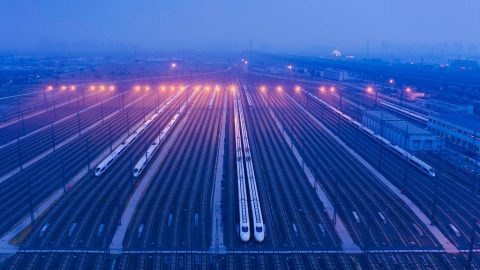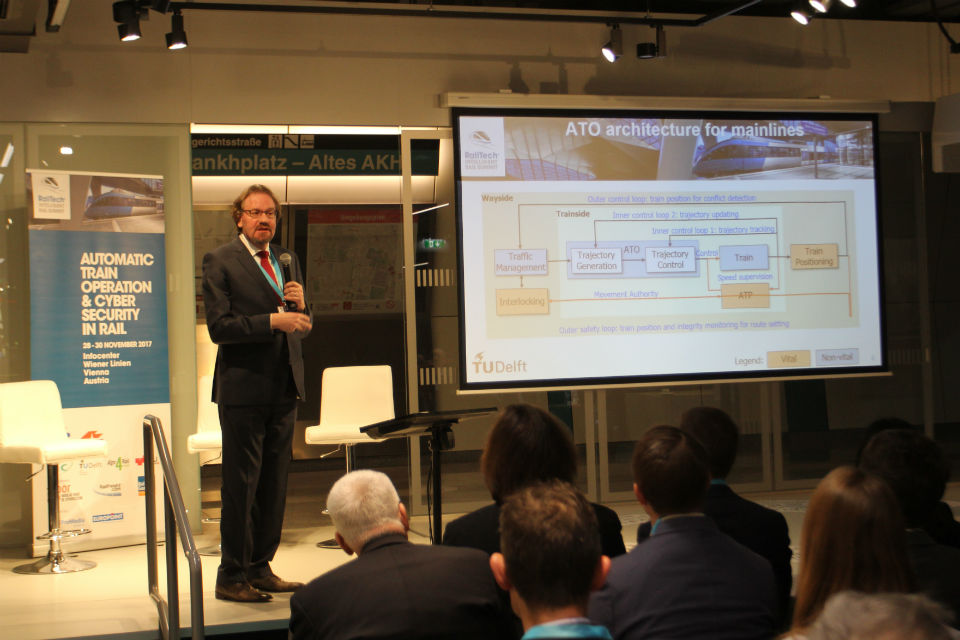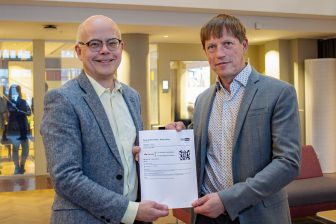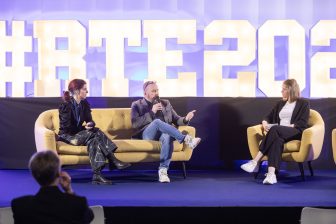
‘Train platooning and working with algorithms are very promising rail technologies’
Platooning, and a traffic management system in which algorithms anticipate train breakdowns, are very promising technologies that could lead to big improvements in train services. With these technologies, obstructions on the lines can be forecast more quickly, and more trains can run on the network, explains Rob Goverde, Professor of Railway Traffic Management at Delft University of Technology, which is currently conducting an international study into their application.
According to Goverde, these new technologies will allow the rail sector to further benefit from the European Traffic Management System (ERTMS) and Automatic Train Operation (ATO). The safety system ERTMS is currently being rolled out across Europe. Meanwhile, various countries are experimenting with ATO, the technology that allows trains to run on the tracks automatically. The combination of ERTMS and ATO means that trains can be run more closely to each other, thereby increasing track capacity.
ERTMS and ATO
“ERTMS is a communication tool that provides traffic control with the position of the train, so they can then make tracks available. ATO is, in fact, an additional function for a train. For example, ERTMS sends braking curve information that the system uses to calculate when the train needs to reduce speed or brake. This information can then be used for ATO, to establish an optimum speed profile.”
ATO over ETCS (the European Train Control System that is part of ERTMS) will use communication that already comes in via GSM-R, or a future communication system, to ensure trains are well controlled.
“ETCS indicates maximum speeds and the train driver has to stay under these—otherwise the system intervenes. ATO looks at the optimum speeds, so that the train does not arrive either early or late, and runs as energy efficiently as possible. It’s completely logical to add this functionality to ETCS”, says the professor. At the moment, the specifications of ATO over ETCS are being established. We now have ERTMS Baseline 3.2, and ATO could work with the next baseline too.”
Capacity
Even before ERTMS has been rolled out, a number of countries want to profit from what ATO can offer in terms of track capacity. That is why other combinations are also being looked at. For instance, in March there was a pilot between Groningen and Zuidhorn in which ATO with Grade of Automation level 2 (GoA2) was combined with Automatic Train Control, New Generation (ATB NG). “By 2030, there will be ERTMS on a number of lines in the Netherlands, but far from all of them. If we want to do something with automatic train control before then, we cannot wait for ERTMS.”
With GoA2, a train driver is still present so they can monitor everything and intervene when necessary. “It is only by applying ERTMS that the driving of the train is completely automated, which means you could also apply GoA3 and 4. But for this to happen, a solution must be found for detecting objects: obstacles or people on or next to the track.”
Text continues under the photo.

Traffic management system
ERTMS and ATO mean that the number of trains on the track can increase. Therefore, argues Goverde, it would make sense to automate processes in the traffic control centre too. “When, as a result of automated trains, it becomes busier on the network, rail traffic managers will not be able to react quickly enough. Therefore the traffic management system also needs to be automated, so all trains can be monitored very closely, and potential conflicts can be anticipated and resolved before they occur.”
“Algorithms work out the best way to anticipate something unplanned happening. The automated system then indicates what the new speed of the train needs to be or changes the track, so all the train traffic keeps moving. Subsequently, this can be fed back to an ATO system or Driver Advisory System on the train.”
“Additionally, you can sometimes encounter large disruptions, for example when switches stop working so trains can no longer run. In these types of situations, an automated traffic management system would be useful, as it can make decisions very quickly. The longer the uncertainty, the longer that trains keep moving, or stop as soon as they see a red signal. Therefore the quicker a system can inform trains to not go further than a particular station, the quicker the rail traffic can get back to normal.”
Virtual coupling
Goverde is a coordinator of the European project MOVINGRAIL (MOving block and VIrtual coupling New Generations of RAIL signalling), which has recently been awarded a research grant. “Our research is looking at trains running with less than a train’s absolute braking distance between them. A high-speed train has a braking distance of five kilometres, so if you stick to the absolute braking distance, the minimum distance between trains has to be five kilometres.”
“With virtual coupling, you work with the relative braking distance. What this means is that you assume the train in front will not suddenly stop. A train monitors the speed of the train in front, and brakes if this train brakes. Consequently, trains can run much closer to each other. It is a sort of platooning on the railway.”
Moving block
“That is what Moving block is for. With Moving block, the distances between trains are not measured in fixed blocks, but in moving ones, so trains can follow each other closely. This can be done with ERTMS Level 3. It is especially useful when something has gone wrong, when trains can end up stopping close behind each other. As the distances between trains are no longer so big, once the trains are up and running again, disruptions are more quickly resolved. This is especially useful for countries that are struggling with capacity problems, such as England, Germany and the Netherlands.”
“You see that with the application of newer systems, more and more data is being sent. In this regard, GSM-R, the current communication system, is relatively limited, so research is also being done into new communication networks, such as 5G. For instance, with Moving block you want much quicker updates about where the train in front of you is, so you get continuously informed that the train ahead has travelled another few hundred metres. The new generation of mobile technology is much better for this purpose.”
“What also needs to be determined is whether technology available to the public can be used, or whether something specific is needed for the railway. The most important criteria are excellent availability and security levels, so the system is not susceptible to cyber attacks.”
Also read:
- ‘European railways have no future without cost-effective digitalisation’
- European railways move ‘from ERTMS patchwork to ERTMS network’
At the Intelligent Rail Summit 2019 in Paris, Rob Goverde, Professor of Railway Traffic Management at TU Delft, will discuss more about these future technologies. He is also a moderator for the summit’s first day, 20 November, which is focused on Automatic Train Operation. For more information, please go to the summit’s webpage.




